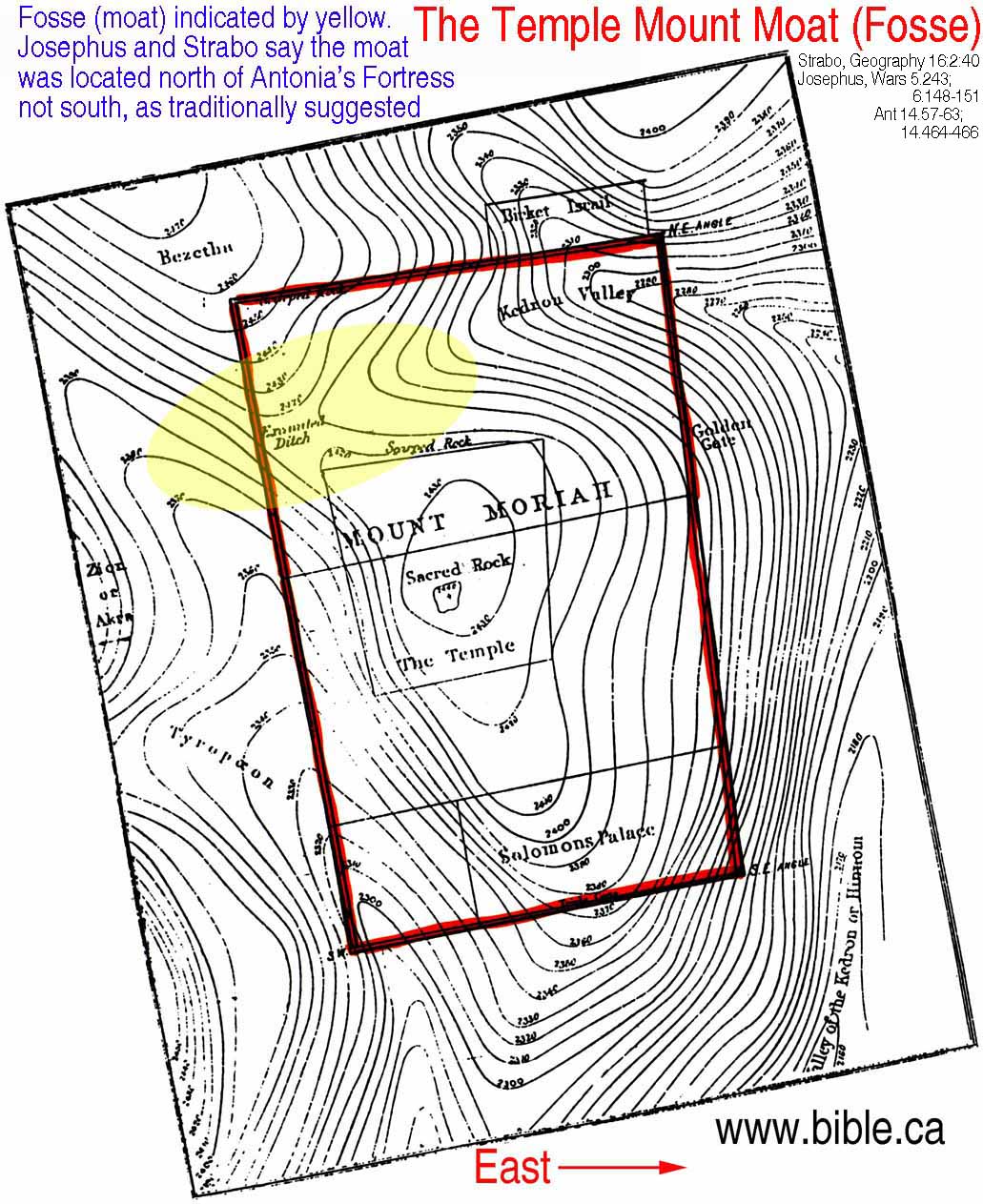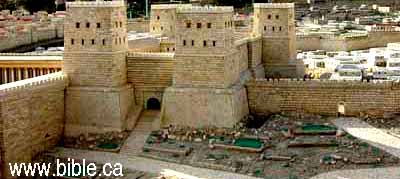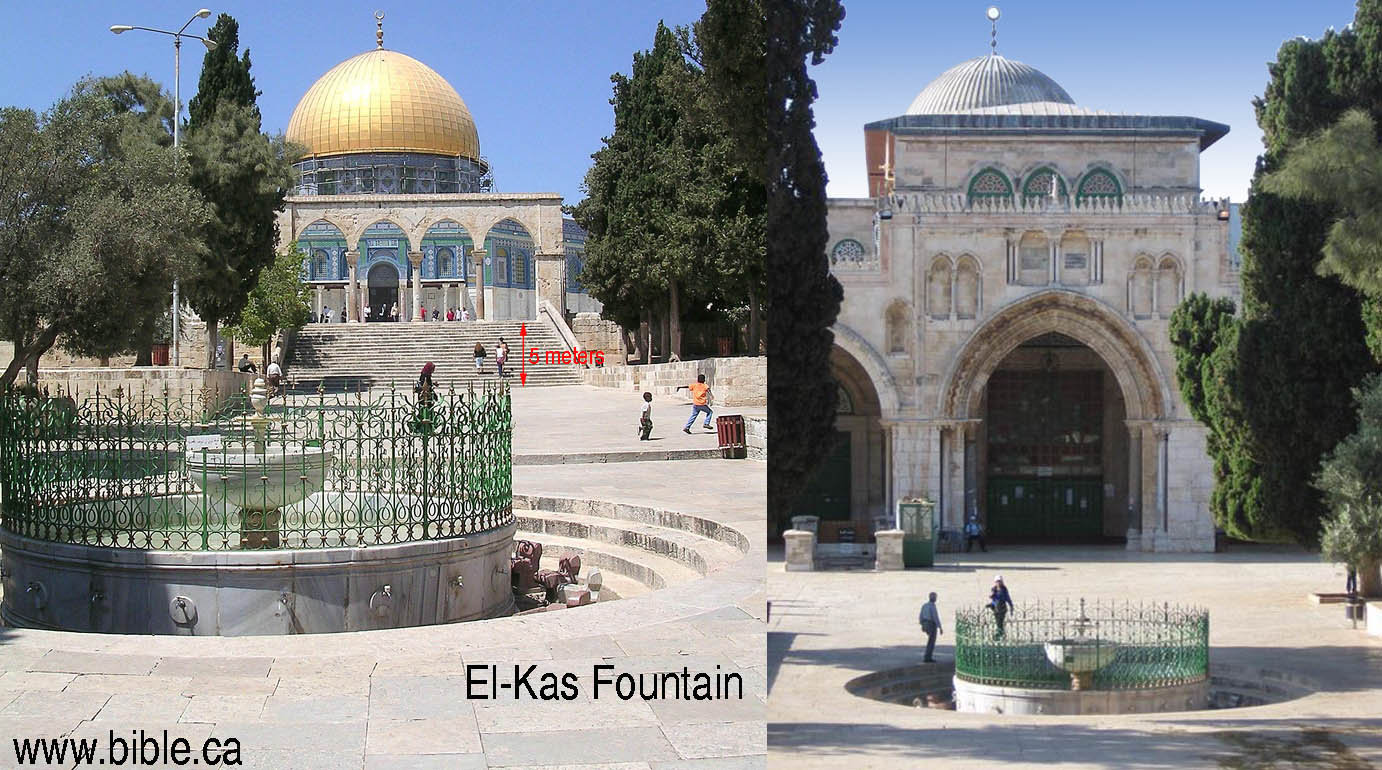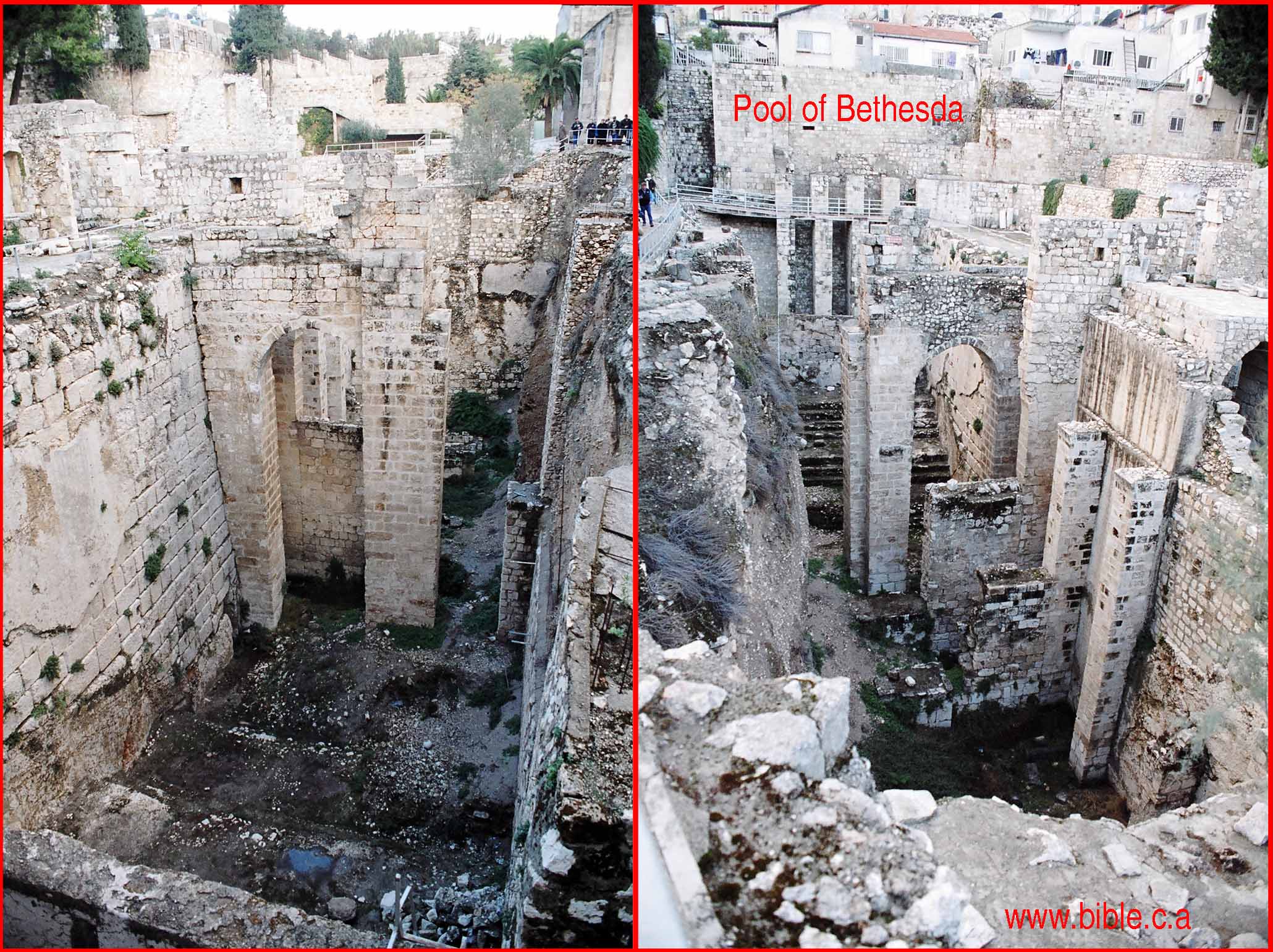|
Strabo in 15 AD and Josephus in 100 AD describes in detail the moat or fosse that was filled during the attack by Pompey on the temple in 63 BC. Both describe a large moat that had been cut out of rock on the north side of the temple. The fosse was 250 feet wide, fifty feet wide and 60 feet deep. The Jews cut a suspended bridge that spanned this moat, and connected the temple with the city. Pompey fills in this fosse and attacks the temple on the Sabbath. Strangely, the Jews for fear of breaking the 4th commandment, would not work at protecting against the attack. Perhaps we understand their thinking when they accused Jesus of breaking the Sabbath by healing a lame man. Then Josephus describes how Herod in 38 BC, attacked the temple from the north, in the same way as Pompey. Next, Josephus says that Titus attacked the Temple from the north by filling in the moat with dirt up to 12 miles away. |

|




